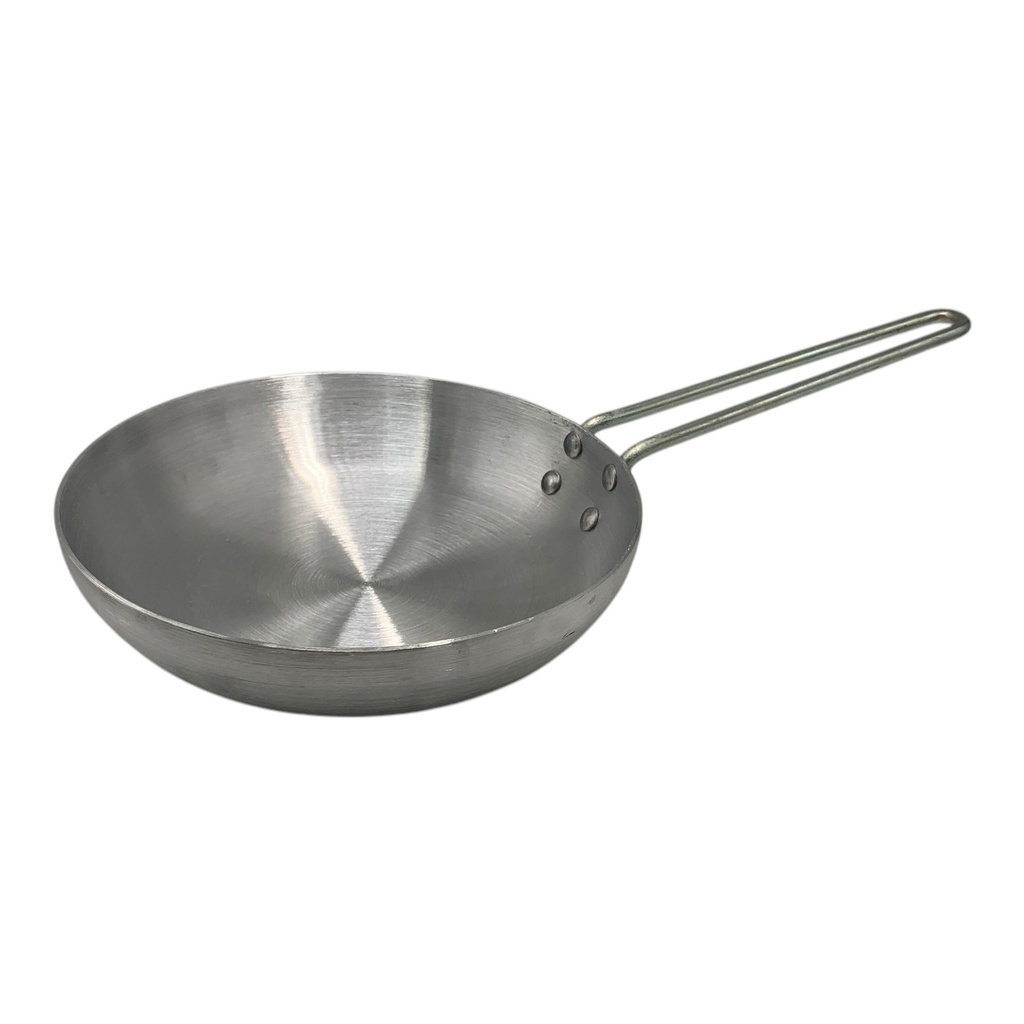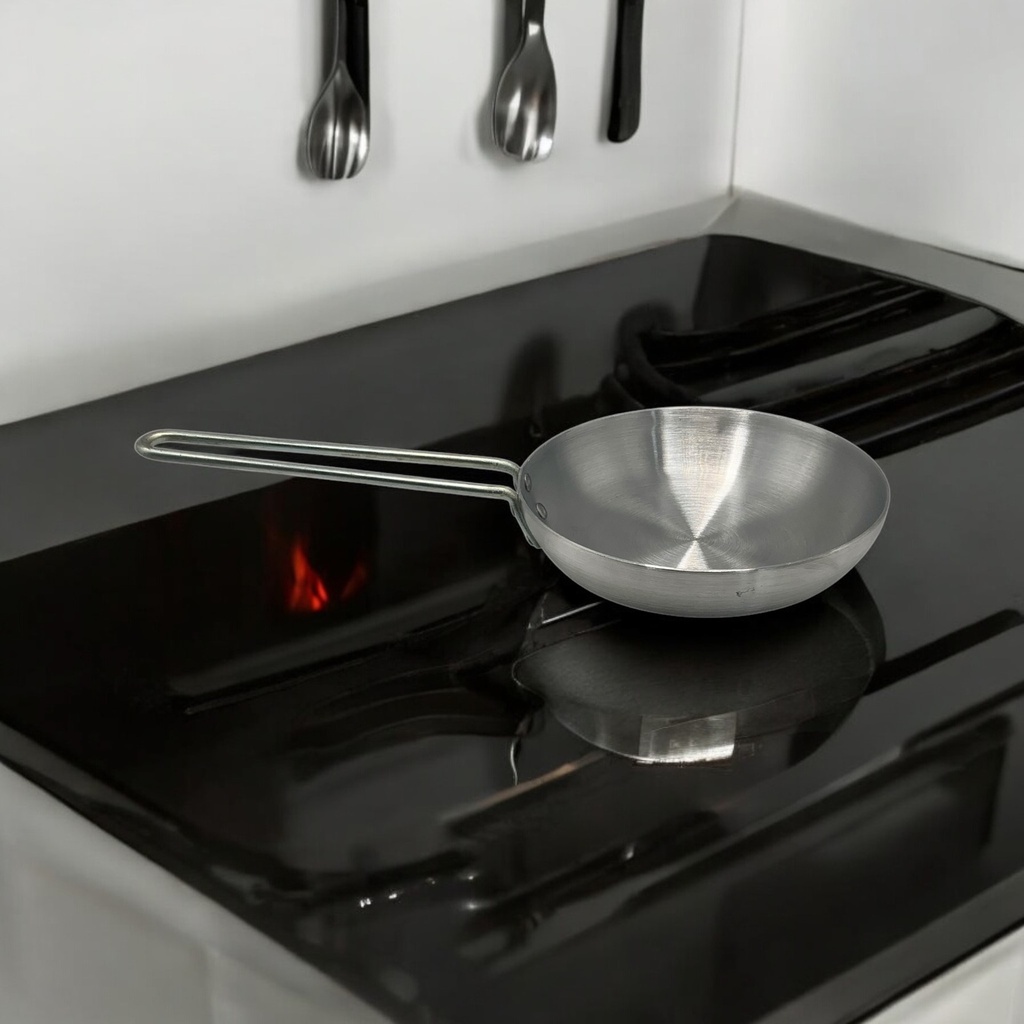Frying pan 23x5cm Aluminium with Handle 3mm FRYHD004
Frying pan 23x5cm Aluminium with Handle 3mm
Here’s a detailed breakdown of the aluminum frying pan (23x5cm, 3mm handle thickness):
Specifications:
Material: Aluminum
Aluminum is known for being lightweight, durable, and resistant to corrosion. It also conducts heat quickly and evenly, making it ideal for cooking.Size:
- Diameter: 23 cm (measuring across the top of the frying pan)
- Height: 5 cm (depth of the frying pan)
Handle:
- Length: Varies, typically about 15–20 cm.
- Material: Usually made of plastic, stainless steel, or heat-resistant silicone.
- Thickness: 3 mm (providing durability and comfort while holding).
Weight: Aluminum frying pans are typically lightweight, which reduces the strain of handling.
Thickness: 3 mm (aluminum pans with this thickness offer decent heat distribution without being overly heavy).
Uses:
- General Cooking: Ideal for everyday tasks like frying eggs, sautéing vegetables, searing meats, or cooking pancakes. The shallow depth allows easy flipping and stirring.
- Breakfast Dishes: Perfect for items like omelets, fried eggs, and bacon due to its quick heating and even heat distribution.
- Sauteing and Stir-Frying: Due to the wide surface area and even heat conduction, it's a great tool for stir-frying vegetables and meats.
- Low to Medium Heat Cooking: Aluminum pans are excellent for cooking on low to medium heat. They may warp if exposed to extreme temperatures.
Advantages:
Lightweight: Aluminum pans are very light compared to other materials like cast iron, making them easy to handle and maneuver, especially for people with limited strength.
Good Heat Conduction: Aluminum heats up quickly and distributes heat evenly, reducing hot spots. This allows for consistent cooking without burning or undercooking certain areas.
Affordable: Aluminum is relatively inexpensive, making this frying pan a cost-effective option for budget-conscious buyers.
Non-Stick Properties (if coated): Some aluminum pans come with a non-stick coating, making them ideal for low-fat cooking and easy cleanup. Even without a non-stick coating, aluminum's smooth surface helps prevent food from sticking.
Versatility: Aluminum pans are compatible with most cooking surfaces, including gas, electric, and induction (if they have a magnetic base).
Corrosion-Resistant: Aluminum is naturally resistant to rust and corrosion, ensuring the frying pan has a longer lifespan if properly maintained.
Even Cooking Surface: The flat bottom ensures food is cooked evenly, reducing the chances of unevenly cooked meals.
Easy to Clean: Thanks to its smooth surface, cleaning an aluminum frying pan is generally hassle-free. Non-stick versions make cleaning even easier.
Considerations:
Not for High Heat: Aluminum pans are best for cooking on low to medium heat. Using them on high heat can lead to warping or damaging the surface over time.
Reactive with Acidic Foods: Aluminum can react with acidic foods (like tomatoes or citrus) and may affect the flavor or appearance of the food. This can be avoided with anodized aluminum or non-stick coatings.
Durability: Aluminum is softer than other materials like stainless steel or cast iron, so it may get scratched or dented more easily, especially if not treated or coated.
Care and Maintenance:
- Avoid Abrasive Scrubbers: Use soft sponges or cloths to clean your pan to avoid scratching the surface.
- Avoid Cooking on High Heat: Aluminum is prone to warping, especially if it is thin. Stick to low or medium heat for longevity.
- Use Proper Utensils: Opt for wooden, silicone, or plastic utensils to prevent damaging the surface.



